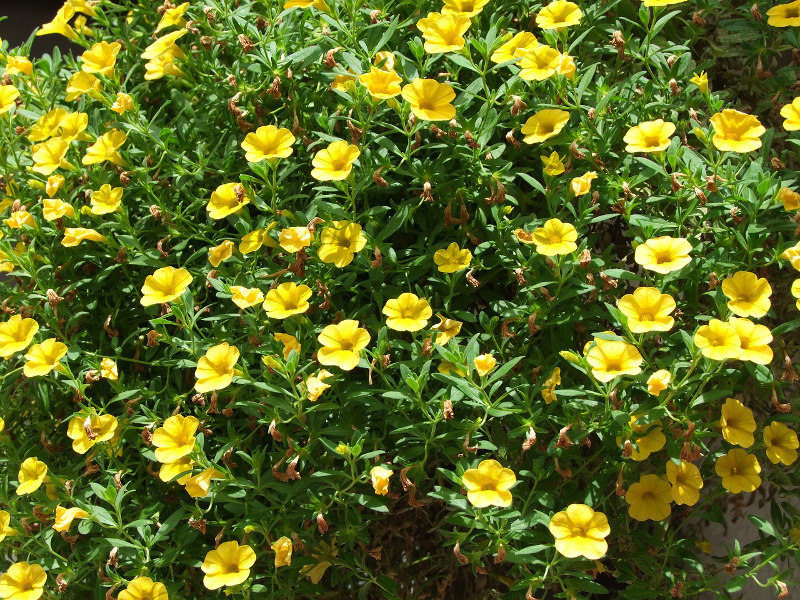Calibrachoa is self-cleaning. This means that the faded blooms fall off by themselves. Pinch them back if you want your plant to grow in a fuller, more compact habit.
When to Prune Calibrachoa
Prune calibrachoa during the active growing season if necessary. Pruning is not required. Only prune if your plant becomes leggy or you want it to take up less space in your garden or container. Avoid trimming during the hottest portion of the day to eliminate adding excess stress on the plant. You can use the trimmings to propagate new plants.
How to Prune Calibrachoa
Step 1 - Inspect your plant.
Look for leggy stems or overcrowding in a container.
Step 2 - Trim back.
Use scissors or pruners to cut back any stems that have grown too long or are crowding against other plants. Only trim a few branches.
Step 3 - Inspect again.
Check to see if light pruning was enough to re-establish the look that you anticipated. If not, trim a few more stems back until the desired look is achieved.
Why Prune Calibrachoa
Calibrachoa is self-cleaning and the spent flowers do not need regular pinching back or deadheading. If your plant has become overgrown or leggy and has stopped blooming, it needs to be trimmed back. Cutting calibrachoa back will encourage new growth and the production of more blossoms. The rejuvenated plant will also be fuller looking.

Calibrachoa Pruning Tips
- There’s no need to remove spent flowers. They will quickly drop off by themselves.
- Pruning will produce a fuller-looking plant.
- New plants can be created from the cuttings.
- Prune off damaged or leggy stems.
 |
Author Maureen Farmer - Published 01-15-2022 |
